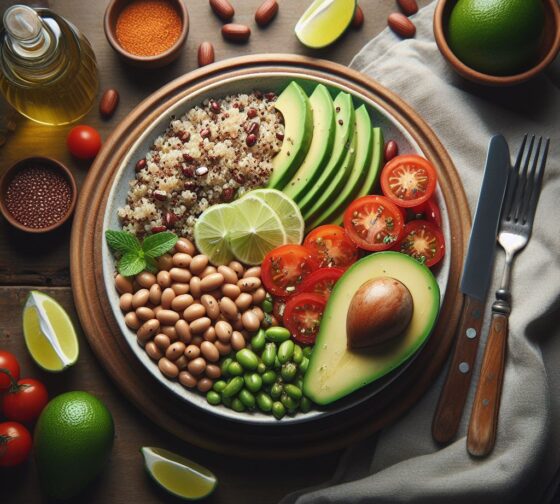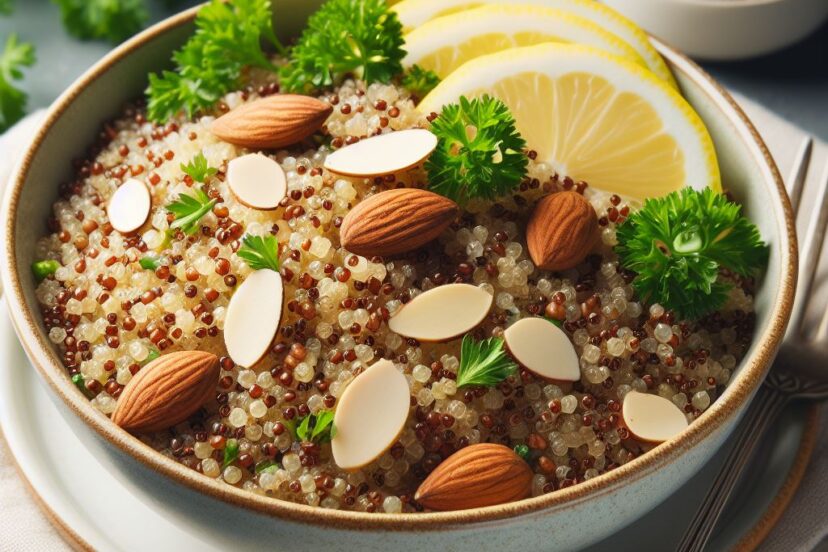Quinoa Glycemic Index: A Guide to Healthy Eating
*We may earn a commission for purchases made using our links. Please see our disclosure to learn more.
Quinoa Glycemic Index: A Guide to Healthy Eating
Introduction to Quinoa and Glycemic Index
As someone who’s deeply passionate about health and wellness, I’ve often explored various foods and their impacts on our health. In this journey, I’ve come across quinoa, a superfood that’s gained immense popularity lately. But what makes quinoa stand out, especially concerning its glycemic index?
Quinoa, a grain crop known for its edible seeds, is often hailed as a healthier alternative to traditional grains. It’s gluten-free, high in protein, and contains all nine essential amino acids. The glycemic index (GI), on the other hand, is a value used to measure how much specific foods increase blood sugar levels. Foods with a low GI are generally better for maintaining stable blood sugar levels.
Understanding the Glycemic Index
The Glycemic Index (GI) is a critical concept in nutrition, especially for those monitoring their blood sugar levels. Essentially, the GI is a ranking system for carbohydrates based on their effect on blood glucose levels. Carbohydrates that break down quickly during digestion and release glucose rapidly into the bloodstream have a high GI; conversely, those that break down more slowly, releasing glucose more gradually into the bloodstream, have a low GI.
Key Points about the Glycemic Index:
- Scale and Measurement: The GI scale runs from 0 to 100. Pure glucose, with the fastest carbohydrate absorption, is rated at 100, serving as the reference point.
- High vs. Low GI Foods: High GI foods (scores above 70) cause a rapid increase in blood sugar, while low GI foods (scores of 55 or less) result in a slower, more gradual rise.
- Impact on Health: Understanding the GI of foods can help in managing various health conditions, including diabetes, heart disease, and obesity. Low GI diets are associated with reduced risk of developing type 2 diabetes and cardiovascular diseases.
- Factors Affecting GI: The GI of a food can be influenced by several factors including how the food is prepared, its ripeness, type of starch, fiber content, and what it’s eaten with.
Incorporating low GI foods into your diet, like quinoa, can lead to more stable blood sugar levels, better weight management, and a lower risk of chronic disease. It’s an essential tool for anyone looking to maintain a healthy, balanced diet.
Quinoa’s Glycemic Index

Quinoa’s glycemic index is relatively low, typically around 53, which is lower than many other grains. This means that quinoa is an excellent choice for those looking to manage their blood sugar levels, such as individuals with diabetes or those aiming to maintain a balanced diet.
When compared to other grains like rice or wheat, quinoa’s lower GI value makes it a healthier alternative. This is particularly beneficial for people looking to improve their metabolic health.
Quinoa Glycemic Index Compared to Other Foods: A Chart Perspective
Understanding the glycemic index of various foods is crucial for making informed dietary choices, especially for those managing blood sugar levels. To put quinoa’s glycemic index into perspective, let’s look at it in comparison to other commonly consumed foods. Here’s a chart that outlines the glycemic indices of different foods:
| Food Item | Glycemic Index |
| Quinoa | 53 |
| White Rice | 73 |
| Brown Rice | 68 |
| Whole Wheat Bread | 74 |
| Oatmeal | 55 |
| Cornflakes | 81 |
| Banana | 51 |
| Apple | 38 |
| Lentils | 32 |
| Sweet Potato | 63 |
Health Benefits of Low Glycemic Index Foods
Eating foods with a low glycemic index, like quinoa, can have several health benefits. It’s great for blood sugar management, as it prevents the rapid spikes in blood glucose levels. This is crucial for people with diabetes, but it’s also beneficial for anyone looking to maintain steady energy levels throughout the day.
Moreover, quinoa can aid in weight management. Foods with a low GI are more satisfying and can help control appetite, reducing the likelihood of overeating. Additionally, low GI foods contribute to heart health by maintaining healthier cholesterol levels and reducing the risk of heart disease.
Incorporating Quinoa into a Healthy Diet
Integrating quinoa into your diet is remarkably easy and beneficial. You can start with simple swaps, like replacing rice with quinoa in your meals. Quinoa’s versatility makes it perfect for salads, soups, and even as a breakfast cereal alternative.
For those looking to get creative, there are countless quinoa recipes that are not only healthy but also delicious. Think quinoa bowls with fresh vegetables, quinoa patties, or even quinoa-based desserts.
Expert Tips on Cooking Quinoa
To get the most out of quinoa, it’s essential to cook it properly. Rinse quinoa thoroughly before cooking to remove its natural coating, saponin, which can give it a bitter taste. A general rule for cooking quinoa is to use two cups of water for every cup of quinoa, bringing it to a boil, then simmering it until it’s fluffy.
Enhancing the flavor and nutritional value of quinoa is easy. Try cooking it in vegetable or chicken broth instead of water, and add a variety of spices or herbs to suit your taste.
Conclusion
Quinoa’s low glycemic index makes it an excellent addition to a healthy diet, especially for those concerned with blood sugar management, weight control, and overall wellness. As a health enthusiast, I strongly recommend giving quinoa a try, experimenting with different recipes, and enjoying the numerous health benefits it offers.
FAQs
Q1: Is quinoa suitable for people with diabetes? A1: Absolutely, quinoa is an excellent choice for people with diabetes due to its low glycemic index.
Q2: Can quinoa help in weight loss? A2: Yes, quinoa can aid in weight management because it’s filling and has a low GI, helping control appetite.
Q3: How does quinoa compare to rice in terms of glycemic index? A3: Quinoa has a lower glycemic index than most types of rice, making it a healthier option for blood sugar control.
Q4: Are there any quick and easy quinoa recipes for beginners? A4: Certainly! Quinoa salads and quinoa bowls are simple, nutritious, and delicious options for beginners.
Q5: Can quinoa be a part of a gluten-free diet? A5: Yes, quinoa is naturally gluten-free, making it a fantastic choice for those following a gluten-free diet.




